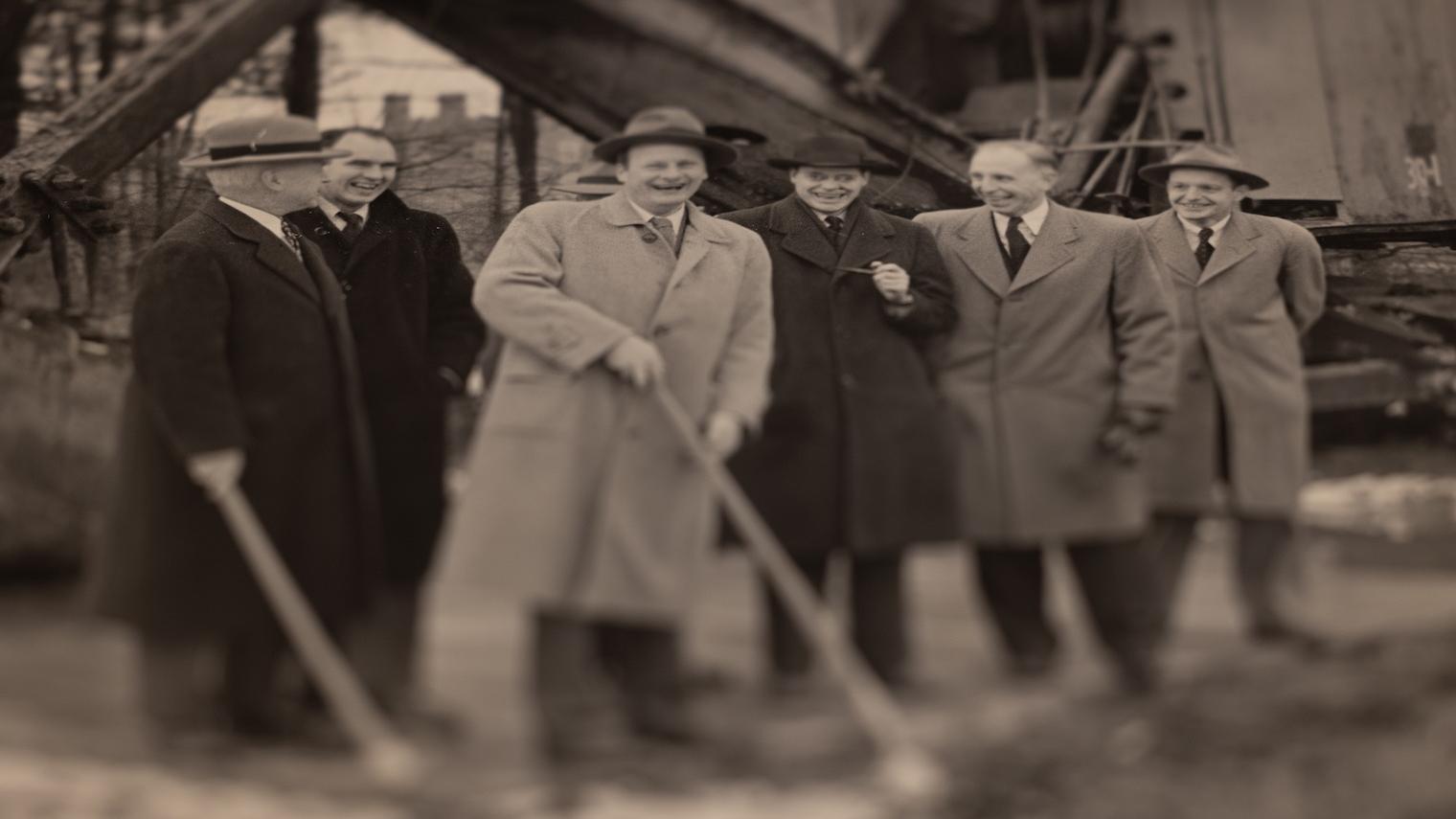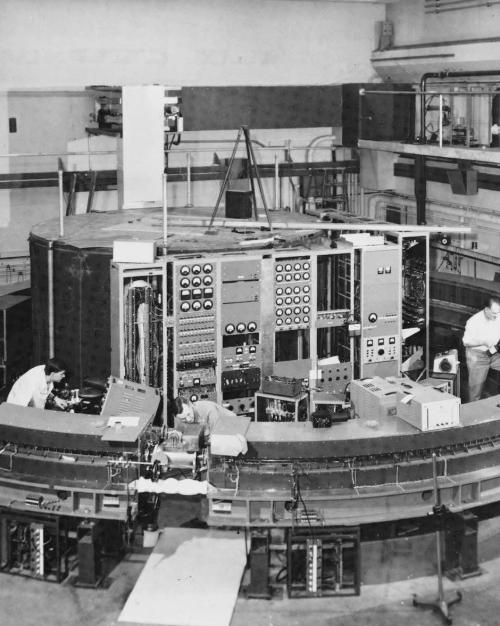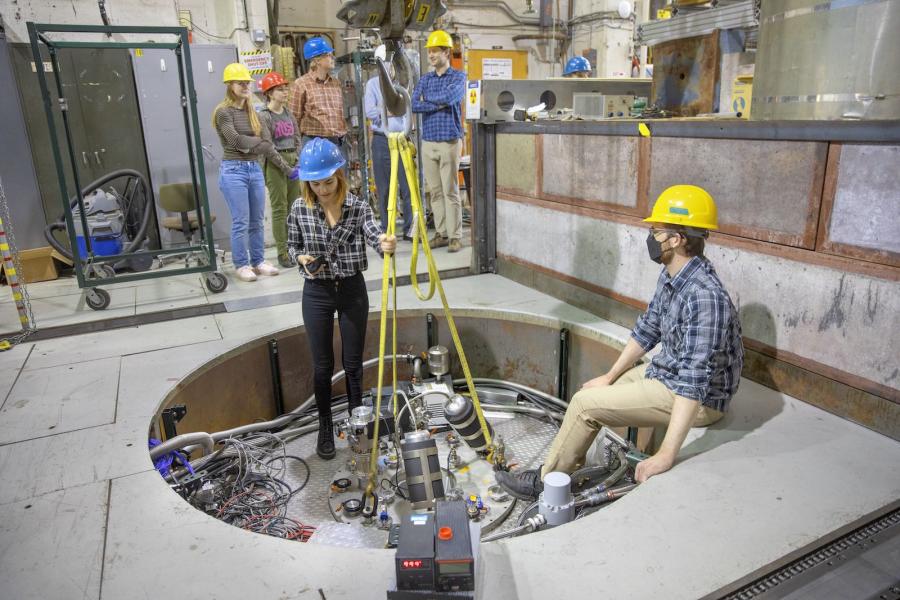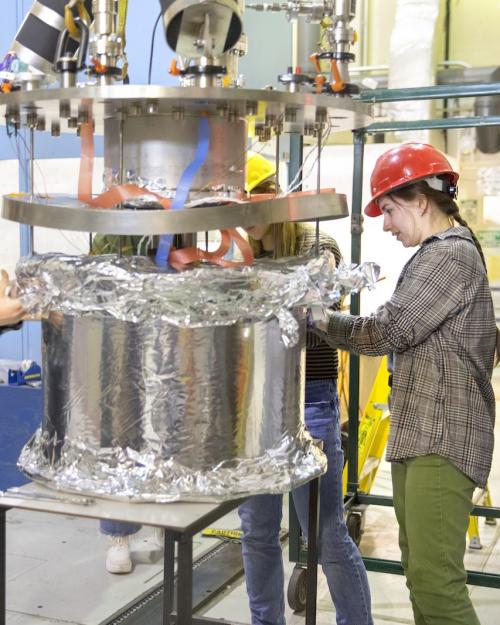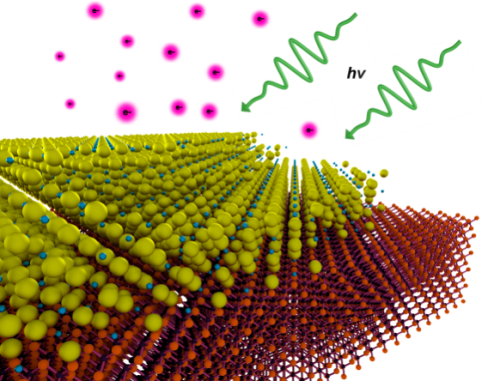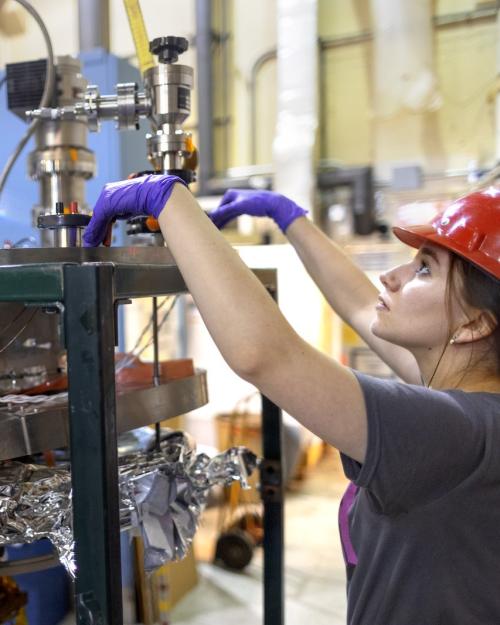Accelerator physics has revealed hidden universes, from the Higgs boson to the blood vessels and tissues seen on a CT scan – and much of that progress is thanks to work done in an unassuming building tucked away on Cornell’s North Campus: Newman Lab.
For 75 years, physicists in Newman Lab have pushed the limits of accelerator physics, inventing new techniques and building ever more advanced equipment to explore the boundaries of the known.
“There are very few universities that do accelerator research. Cornell is a leader among them,” says Ritchie Patterson, Helen T. Edwards Professor of Physics in the College of Arts and Sciences and director of the Center for Bright Beams.
Newman owes its existence, at least in part, to Nobel Laureate Hans Bethe. As leader of the theory group for the Manhattan Project that designed and built the atomic bomb in the 1940s, Bethe was ideally placed after World War II to entice many of his collaborators at Los Alamos to join him at Cornell. The illustrious group included Dale Corson, Richard Feynman, and many others.
The experimentalists in the group decided that they needed to have an accelerator at Cornell in order to carry out their kind of nuclear physics. But there was no ideal space for the physicists to realize their accelerator dreams.
The Department of Physics (A&S) has had a nomadic existence since its establishment in 1868, when it was chased from Morrill Hall by intolerable fumes rising from chemistry classes in the basement, including sojourns in McGraw Hall, White Hall, Franklin Hall (now called Tjaden) and Rockefeller.
“Hans Bethe threatened to accept Columbia’s job offer if Cornell didn’t build him a proper lab,” says physicist Peter Lepage, the Andrew H. and James S. Tisch Distinguished University Professor Emeritus (A&S). “So: Newman Lab.”
Dedicated on Oct 7, 1948, Bethe turned the first spade of earth for its construction at the groundbreaking. The facility included big machine and electronic shops and the highest ceiling on campus, 28 feet 7 inches, to accommodate a crane needed to move accelerator equipment. A clean room was later added.
But the first accelerator the researchers built in Newman, a 300 MeV (megaelectron volt) synchrotron to accelerate electrons to make X-rays to bombard heavier particles to explore what was inside, wouldn’t work.
Bethe asked Robert Wilson, the head of the experimental group at Los Alamos, to come to Cornell and help as director of Newman Lab.
“Hans Bethe went personally to Princeton and kept on bugging Wilson until he agreed,” says Maury Tigner, Ph.D. ’62, Hans A. Bethe Professor Emeritus (A&S).
True to his reputation, Wilson got the accelerator working.
“When I came to Cornell in 1958, that first electron synchrotron had just been retired and was part of the electrical circuit of the next synchrotron, which was the first synchrotron that Robert Wilson built when he came here as director of Newman Lab,” Tigner says. “He couldn't stop building accelerators. As soon as he finished one, he started a next bigger one.”
The 300MeV machine was followed by a 1.3 GeV, which incorporated parts from the first, as did subsequent generations. The next accelerator, a 2.2 GeV, spanned the entirety of Newman Lab’s basement.
For his next accelerator, Wilson needed more space, which led in 1968 to the construction of a 10 GeV synchrotron under alumni field and its associated building, Wilson Lab, which evolved into the Cornell High-Energy Synchrotron Source (CHESS).
Though Cornell’s accelerator outgrew Newman Lab, the building’s importance continues. And its out-of-the-way entrance, kept locked against casual sightseers, thrills physicist Jared Maxson every time he walks through it.
“This building has hosted devices going from a few feet across to those that fill up the basement floorplan. It’s a total honor to get to walk to work in this building where all this history has transpired,” says Maxson M.S. '12, Ph.D. '15, the Joyce A. Yelencsics Rosevear ‘65 and Frederick M. Rosevear ‘64 Assistant Professor of physics (A&S).
Innovations at Cornell
Cornell was a pioneer in developing the technology for superconducting cavities, a critical component of modern accelerators, and continues to be a leader in the field. Superconducting cavities are where particles absorb energy to accelerate, and are made up of special materials through which, at the right temperature, electric current can flow without any resistance.
“What Cornell developed is now the gold standard for accelerating beams around the world,” Patterson says. “We have facilities to research superconducting cavities that are rivaled by only a few other places in the country, and so we're able to make advances here that would not be possible anywhere else.”
Superconductor technology is important for many applications, including the superconducting magnets in MRI machines.
The electron storage ring was another technology furthered at Cornell that continues to have critical importance.
“When we first proposed making a storage ring here at Cornell, people just poo-pooed the idea,” says Tigner. “They said it will take way too long to inject the electrons so you won't get much physics done. And then we invented a way of injecting electrons quite rapidly into the storage.”
That development led to the building of the Cornell Electron Storage Ring (CESR), says Joel Brock, the current director of CHESS. “Accelerator developments pioneered in Newman supported the creation of CESR and the upgrade to superconducting RF cavities which currently drive it,” says Brock, Given Foundation Professor of Engineering in the College of Engineering. “Current work on higher temperature superconducting cavities and high gradient accelerating cavities is critical to our efforts to continuously improve CESR and keep CHESS a world-leading synchrotron facility.”
The Cornell physicists also invented a way to circulate multiple bunches of electrons and positrons in the accelerator that collided in a single designated place, Tigner says, which multiplied the luminosity of the machine. (Luminosity refers to how many collisions there are in a certain period of time.)
“We are very strong today with beautiful, very bright electron beams,” Patterson says.
Being able to accelerate beams more easily in superconducting cavities offers promise beyond their use in accelerators, including contributing to the fight against climate change and environmental destruction, wastewater treatment and medicine.
“Particle accelerators intersect with our daily lives right now, and will more frequently in the future,” says Maxson. “Particle accelerators are used for treatment of cancer in hospitals all around the world. Increasingly, electron accelerators are being used for wastewater treatment at the scale of cities.”
Accelerators could also be used to kill parasites in wastewater, which can survive current treatment methods. They could also get rid of “forever” chemicals. Such efficient on-site decontamination isn’t possible with the current generation of accelerators, but Maxson and other researchers at Cornell are considering the problem.
Another innovation pioneered at Cornell could have an impact on the energy crisis by enabling accelerators to reuse the vast amounts of energy they require to operate.
The concept of reclaiming the energy of a used electron beam to accelerate the next beam of particles -- instead of dumping it after the experiment -- was first suggested by Tigner in a 1965 paper, but developing the technology took another four decades of research, much of it taking place at Cornell. Construction of the Cornell-Brookhaven Energy Recovery Linac (ERL) Test Accelerator facility, known as CBETA, was completed in 2019.
The technology could also contribute to more efficient manufacturing of things such as computer chips, which are made using ultraviolet light lithography, which requires huge amounts of energy.
“As chips get smaller, we need to "write" them with ever shorter wavelengths of light, and these advanced light sources consume a lot of power,” Maxson says. “We’re looking at using acceleration to create extreme UV light using the energy recovery technology that was pioneered at Cornell.”
According to Patterson, the energy footprint of chip fabrication could be reduced by as much as a factor of 10 by the use of high power beams generated by the superconducting cavities being developed at Cornell.
Researchers in Newman have also played a critical role in the development of synchrotron radiation, which had been discovered in 1947. These X-rays can be used for numerous purposes, from fundamental biology to materials and engineering studies to medicine, including traditional X-ray imaging, phase-contrast X-ray imaging and tomography.
Cornell Professors “[Diran] Tomboulian and [Paul] Hartman measured the spectral and angular characteristics of synchrotron radiation on a synchrotron in the basement of Newman in 1956 and confirmed the predictions,” Brock says. “This was one of the first demonstrations that light could be created by a quantum mechanism other than the relaxation of an excited atom.”
In addition to building accelerators, Cornell has been a leader in building the instruments that detect products of accelerator collisions.
“One thing I like to say is that a beam is only as good as your detector. No use having a great beam if you can’t see it well,” says Maxson.
Maxson recently installed a powerful new detector developed at Cornell in his experimental diffraction beam line. “It’s totally revolutionized what we can see and the precision with which we can see it,” he says.
The Large Hadron Collider (LHC) in Switzerland is also benefiting from the detector expertise of Cornell physicists. Prof. Anders Ryd is leading the major upgrade of an LHC detector that will allow data to be taken at an order of magnitude higher than it currently can. As principal investigator, he oversees a consortium of 32 universities – but for his own contribution to the project, he’s using Newman Lab’s machine shop and cooling and thermal systems to build a new detector for the LHC.
Because detectors need to be able to survive the very intense radiation environment created by collisions in the LHC, “there is a constant kind of evolution in the capabilities of these detectors that are necessary for us to explore the physics of the future,” says Ryd.
The Student Experience
When Fermilab, an even bigger accelerator design, beckoned in 1967, Wilson left Cornell to direct its construction, taking the experience he’d gained at Cornell with him. That pattern – of Newman lab as the training ground for accelerator physicists – continues today.
“Cornell is famous for educating students in these areas,” says Patterson. “Education may seem obvious for Cornell, but so few universities have these capabilities, and so few have chosen to recognize accelerator science as a discipline, that the opportunities for training are very limited,” Patterson says.
Accelerator scientists are in high demand because they're responsible for building some of the most important scientific and industrial tools available to humanity, Patterson says. “We contribute many young scientists who go on to be leaders in the field, taking important jobs at national labs in industry and also at other universities.”
“I was a grad student here in the department and there are not many places like Cornell which have such deep expertise in accelerator physics,” said Maxson. “After my postdoc I was delighted to come back as a faculty member because this is really one of the capitols of studying accelerator science in the world.”
Matthias Liepe, too, studied at Cornell. “As a graduate student in Germany at a national research lab, students weren’t allowed to do many things for themselves. My advisor sent me to Cornell for six months to learn how to do things,” says Liepe, professor of physics (A&S).
That training isn’t restricted to graduate students, Liepe says. “What we do goes from theoretical to very much hands-on engineering work, so it’s great for incoming students from different fields. You can have projects which are suitable for undergrads with limited experience but is still part of our main mission. They get to learn how to build an instrument, how to do data analysis, how to program, take data, do more theoretical work -- it’s the whole range of being an experimentalist – even basics like how to solder and build an electronic circuit,” Liepe says.
An Interdisciplinary Space
Accelerator physicists are not the only ones taking advantage of Newman Lab. Abigail Crites, an observational cosmologist, has her eyes on particles further from home than those whirling around in terrestrial accelerators. She’s building a telescope in Newman that will measure the cosmic microwave background radiation, remnants of the Big Bang that hold clues to the early universe.
Newman Lab is also important to the Center for Bright Beams, a NSF science and technology center led by Patterson. The Center was established with the goal of increasing the intensity, or brightness, of beams of charged particles by a factor of 100 while decreasing the cost of key accelerator technologies. While the center is an organizational structure, not a physical one, much of the crucial research is done in Newman Lab.
“The Center for Bright Beams was inspired because we understood that there were limitations to better particle beams that really required an interdisciplinary approach,” says Patterson. “So the Center gathered together people in surface chemistry, material science and accelerator science and put their ideas together and has been able to make enormous progress on critical issues for accelerator science.”
Maxson is a team leader at the Center, and says his lab has partnered with material science faculty members across campus, as well as those in surface chemistry and condensed matter physics -- both theory and experiment -- to help design emitters of electrons that produce denser beams and colder beams, beams that are more coherent.
The face of physics is changing, says Patterson. “You need to have a cooperative effort, everybody helping everybody else, in order to make the biggest advances possible. And that's a different kind of team: it's diverse, there are women and men in equal numbers. I think this cooperative approach to doing science is incredibly powerful.”
In addition to other fields aiding in the development of accelerator technology, researchers at Newman also see the value of their work for other fields.
“We’re really interested in using our electron beams to help out other communities of science,” says Maxson. Because accelerated electrons can have very small wavelengths, they can be smaller than the spacing in between the atoms in materials This means they can be used to take pictures of atoms inside materials.
Maxson’s lab has found a way to take these images of atoms using a very fine time resolution: “We can actually take pictures of atoms in motion, as they’re wiggling inside of materials,” he says. This new technology will enable material scientists to elucidate the fundamental properties of materials that underpin the macroscopic things we see.
“We're always keeping our eye on the future and are ready to go after things that are exciting,” Patterson says.

